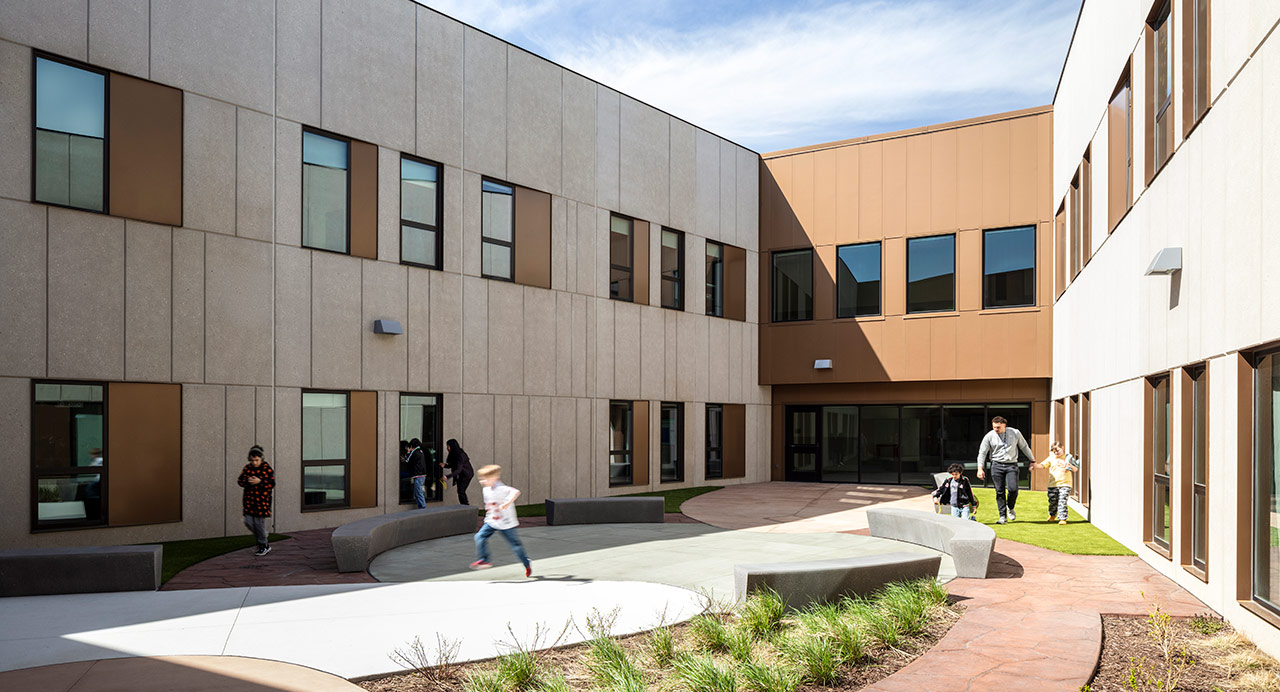
Deliberately subdued: research-driven A.E.R.O. Therapeutic Center embraces special needs students and the teachers who help them thrive.
Flip through a magazine of award-winning contemporary schools. You’ll notice a few similarities: extensive glass, bright colors, large open spaces for extroverts. The new A.E.R.O. Therapeutic Center in Burbank, Illinois has none of these features. And yet, according to A.E.R.O. Special Education Cooperative Executive Director Dr. Bill Roseland, “This school is very special. The building represents a center of learning, but what it really is for students and families is a center of hope.”
A few of the many ways the 150,000-square-foot school departs from the norm include six student entries, corridors with muted colors and lopsided lighting, small cafeterias with translucent windows separating them from corridors, quiet rooms with soothing colorful lights, and an entirely accessible playground.
These differences, all intentional, aim to enrich the educational experience of A.E.R.O.’s population of differently abled and behaviorally challenged students. The school, designed by Legat Architects and built by IHC Construction, stems from intense research into the specific needs of this unique population.

The difference is apparent the moment one passes through the main entry. The atrium is not a massive space, and there are no vibrant colors. Beneath the staircase, a nook welcomes students who might want to retreat yet still feel part of the atrium activity. Halfway up the stairs, a subtle birch tree wall graphic creates a connection to nature without becoming disruptive or intimidating.
The design’s focus on advancing A.E.R.O.’s program while respecting the budget appears in everything from the textured wayfinding walls to the layout that places specialists at the building’s core to be as close as possible to students. The building surrounds two internal courtyards, each designed to support the therapeutic needs of students in a safe, enclosed outdoor environment.
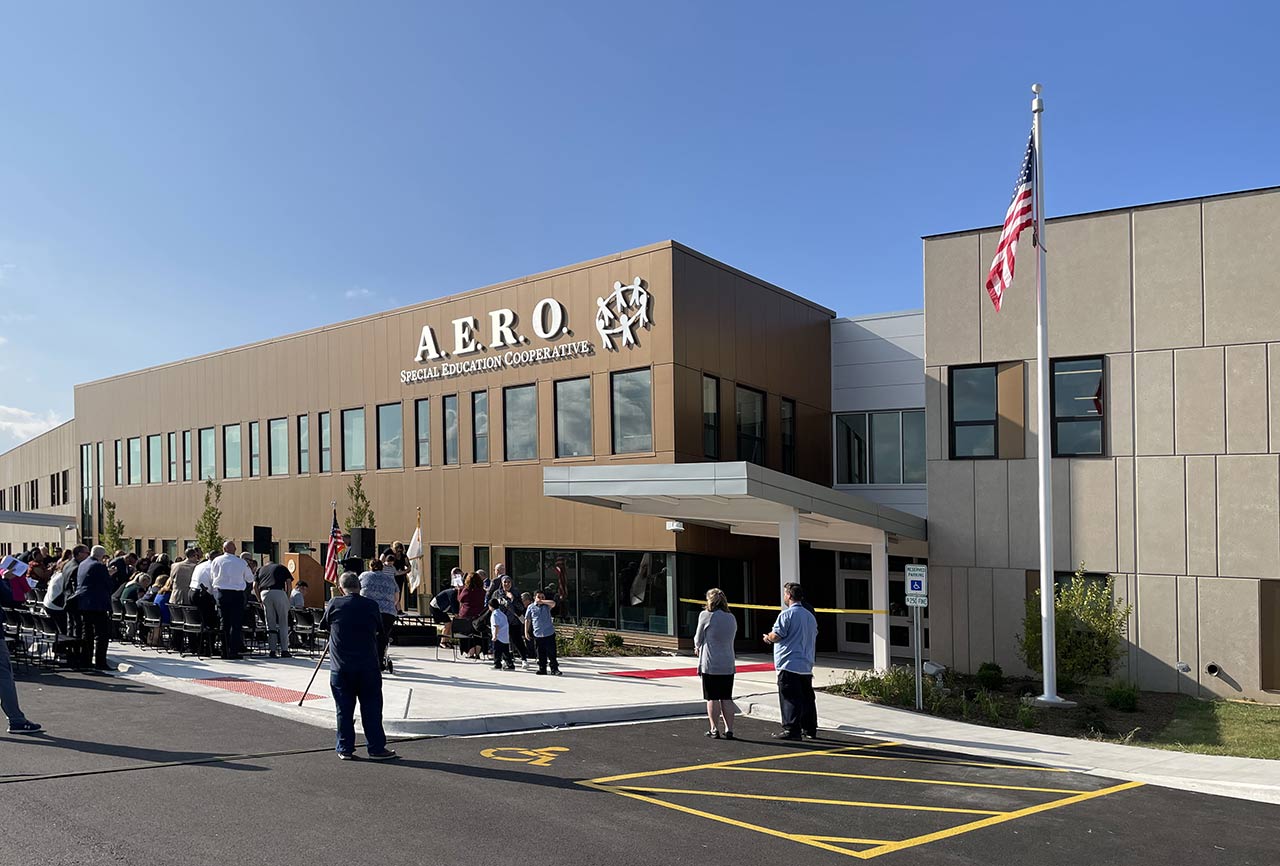
A.E.R.O.’s Journey to a Unified Campus
For decades, A.E.R.O. operated from a facility half the size of the new building. A nomadic and costly operations scheme had the organization frequently moving in and out of up to 15 rented classrooms at schools within the region. These satellite classrooms, usually at the end of a corridor, were not designed for A.E.R.O. students. Moreover, the organization’s P.R.I.D.E. (Personal Responsibility through Independence and Developmental Education) Alternative Program for students with behavior/emotional disorders was housed in a separate building.
Lack of storage space was another major problem. The heavy equipment the students used was often relegated to hallways, which caused clutter and impeded navigation.
A core team of A.E.R.O. administrators, superintendents from A.E.R.O.’s member districts, and the design/construction team met monthly throughout planning and design. Legat also led 20 focus group meetings to gather teacher input.
The resulting facility, built on the site of a former girls’ Catholic high school, consolidates all 420 students and 375 employees (550 students and 400 employees max) under one roof in a central location. It also creates a safe, nurturing environment with connections to daylight and nature as well as much-needed storage space. Pockets within the wide multineeds corridor, for instance, store wheelchairs and other personalized equipment.
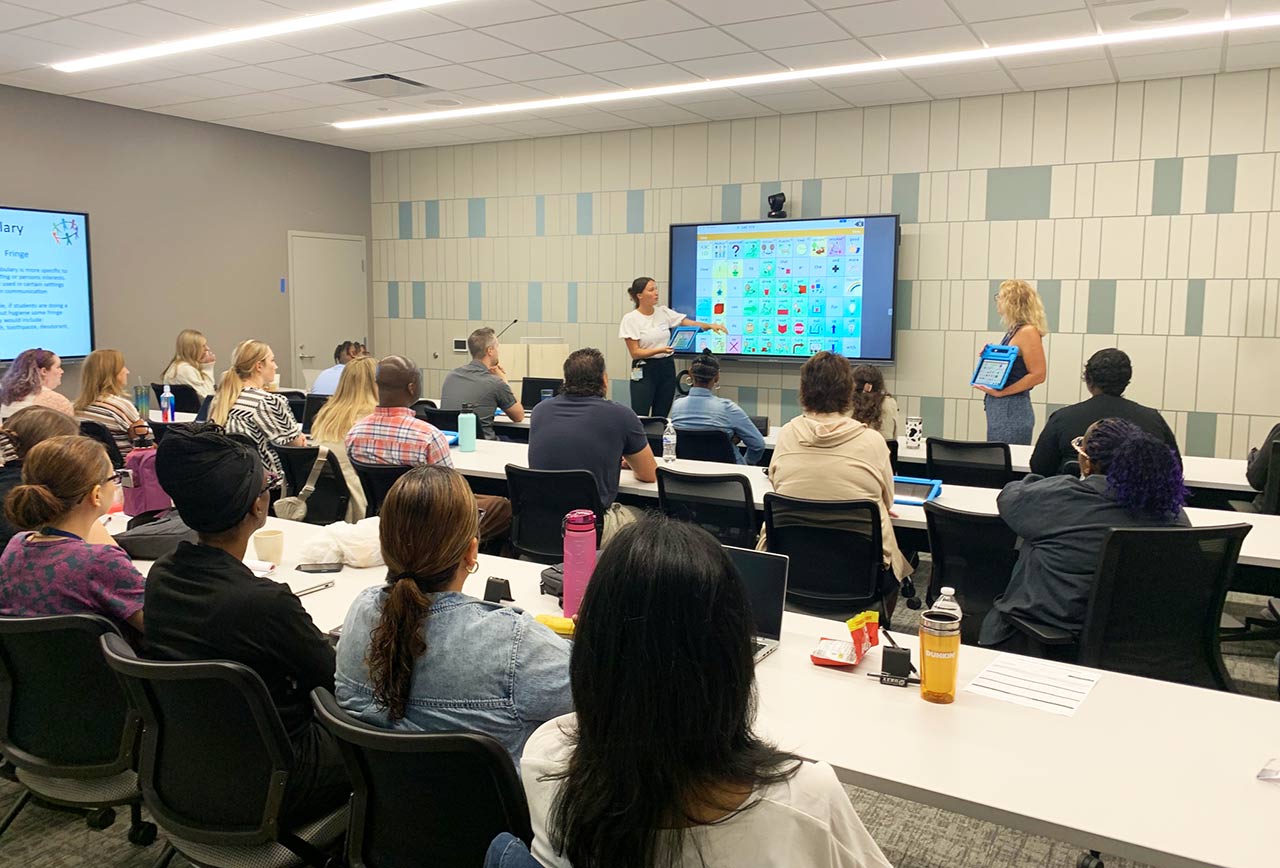
A New Angle for Special Education Schools
During planning, administrators shared concerns that the new school’s large size could distress some A.E.R.O. students. One of the many ways the design responds is by rotating classroom wings 10 degrees. This not only lowers costs by reducing square footage but also makes the building appear much smaller. A person standing outside at the end of a long wing, for instance, will be unable to see the full length of the building because of the angle. Similarly, someone within the building looks down what appears to be a 100-foot-long corridor instead of one three times as long.
“The precast concrete we used for the walls wants to be a box, but we didn’t want it to seem like a never-ending wall,” said Legat project manager Rob Wroble. “The 10-degree angle makes it feel like much smaller wings.”
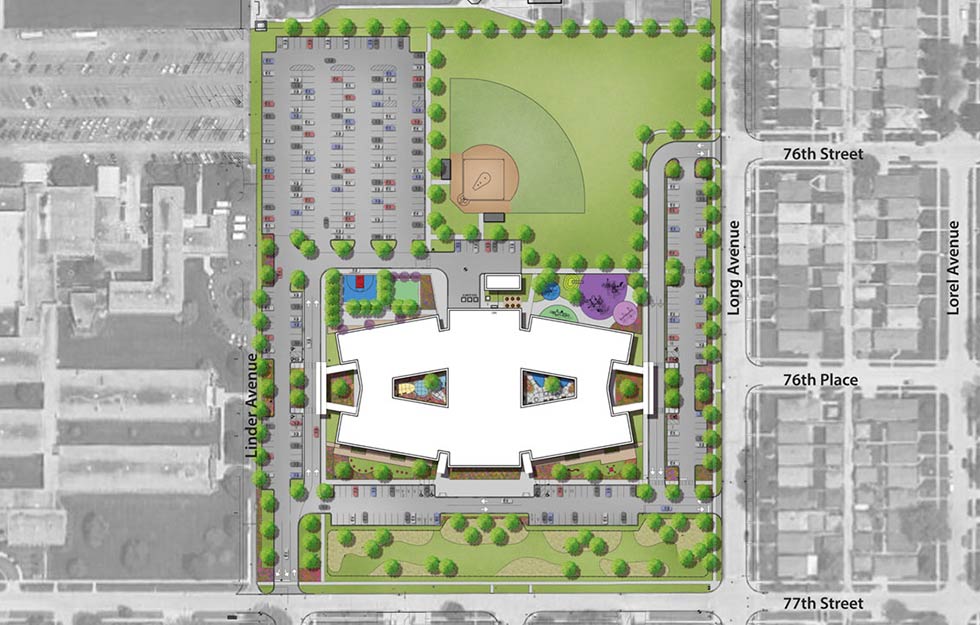
A total of eight wings (four on each level) extend from a central shared space containing the main office, the gym, and building services. During an emergency, all wings can be locked off from the rest of the space. In the event of a tornado, all wings have easy access to the gym, which doubles as a tornado shelter.
The lower level houses severely disabled students (ages three to 22) in one wing and students with varying degrees of disability in the other three. Two wings on the second floor accommodate the P.R.I.D.E. program for students with behavior disorders. The remainder of the second floor hosts high school and post-high school students enrolled in A.E.R.O. programs dedicated to building critical academic and life skills.
Another departure from the traditional school layout is that each wing has a core area with a work room, storage areas, and offices for key staff such as therapists and nurses. This enables these specialists to be as close as possible to students (instead of the main office where they are typically located).
“It’s similar to a healthcare setting where a nurse’s station is close to patient rooms for quicker response times,” said Wroble.
The uncommon geometry also allows for large movement areas along the corridor for physical and occupational therapy.

Design Eases Student Transitions
The Legat team’s research revealed that transitions from one space to another can be stressful for special education students.
“We needed to be sensitive to the transitions that students undergo as they experience their day,” said Wroble. “That meant minimizing the intimidation factor for students as they enter the building and navigate its corridors.”
The design response starts at the exterior: the campus includes three driveways and parking on four sides to move students and staff members in and out as smoothly as possible. Six separate entries reduce the number of students entering the same area at once. Copper panels and canopies identify each entry.
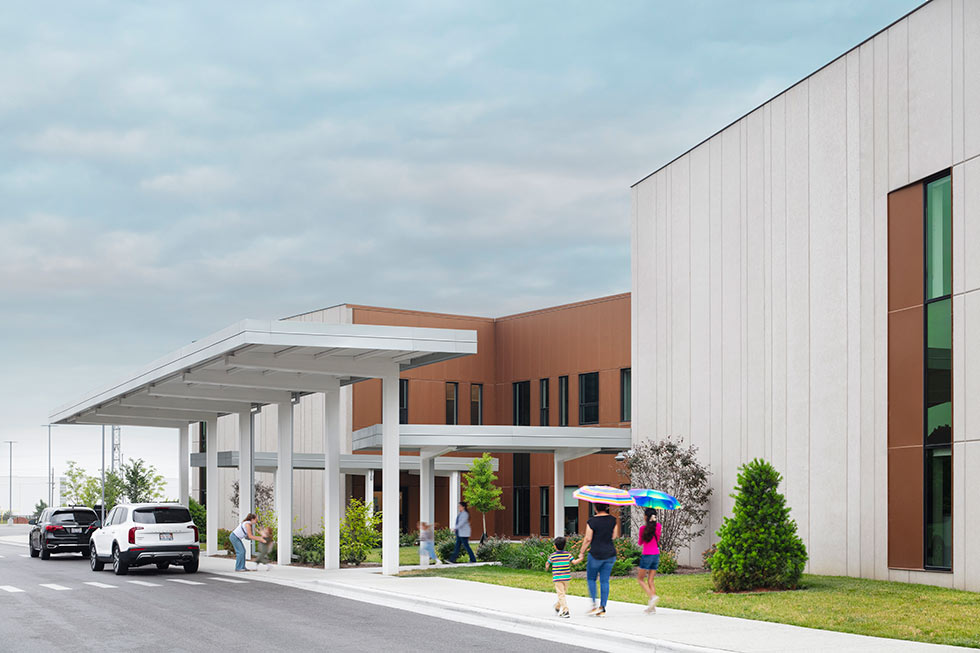
“The canopies not only protect students from weather but also reduce the scale for kids who have issues with being in a voluminous space,” said Legat’s Jessica Carlson.
The design also eases the transition between corridors and classrooms:
- Each corridor has a toned-down version of the colors of A.E.R.O.’s four founding high school districts: Argo, Revis, Evergreen Park, and Oak Lawn.
- A different nature-focused sign (earth, for instance) with a tactile material identifies each corridor.
- Corridor lighting creates one darker side for students who are sensitive to light.
- Classrooms entrances have curved walls and lower soffits for smoother entry.
- Classroom doors are placed at a 90-degree angle to corridors to minimize distractions.
- A doorless light room in each corridor enables staff to use a touch panel to control the color of light to calm students with sensitivities.
According to Wroble, the corridors give “cues that are subtle rather than overwhelming to ease navigation. You can tell people, for instance, to go to the earth wing or the green wing.”
Carlson added that the corridor design also considers sensitivity to light. Each corridor has an “active” wall with lighting, doors, and flooring patterns, as well as a darker “passive” wall for students who prefer a less vibrant setting.
“The active side has more consistent linear lighting so you don’t get pockets of light,” said Carlson.
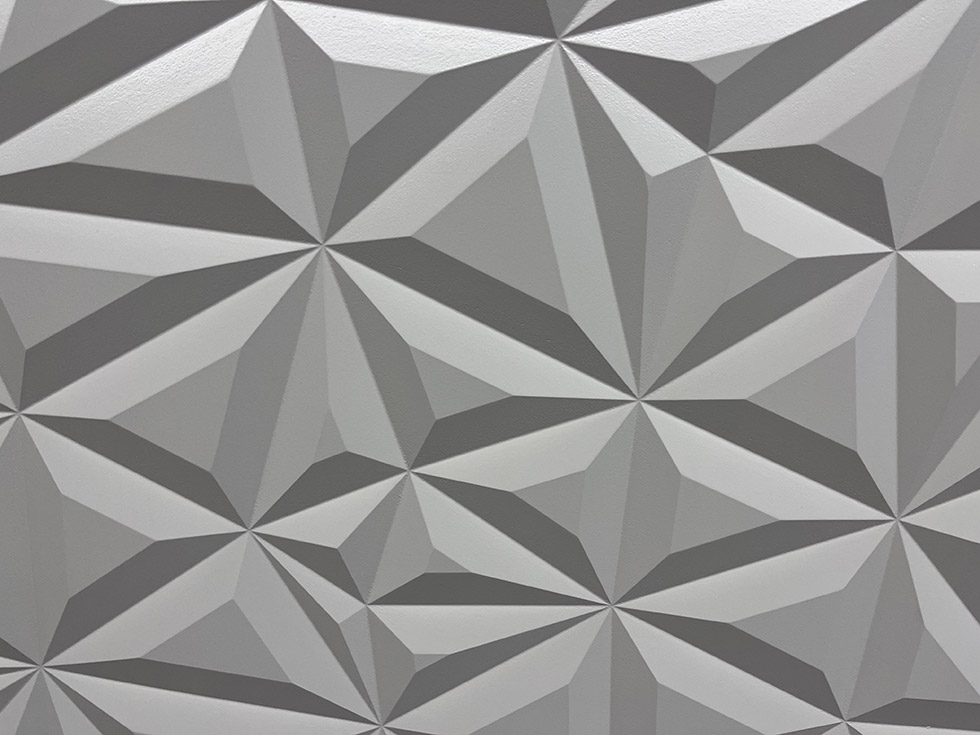
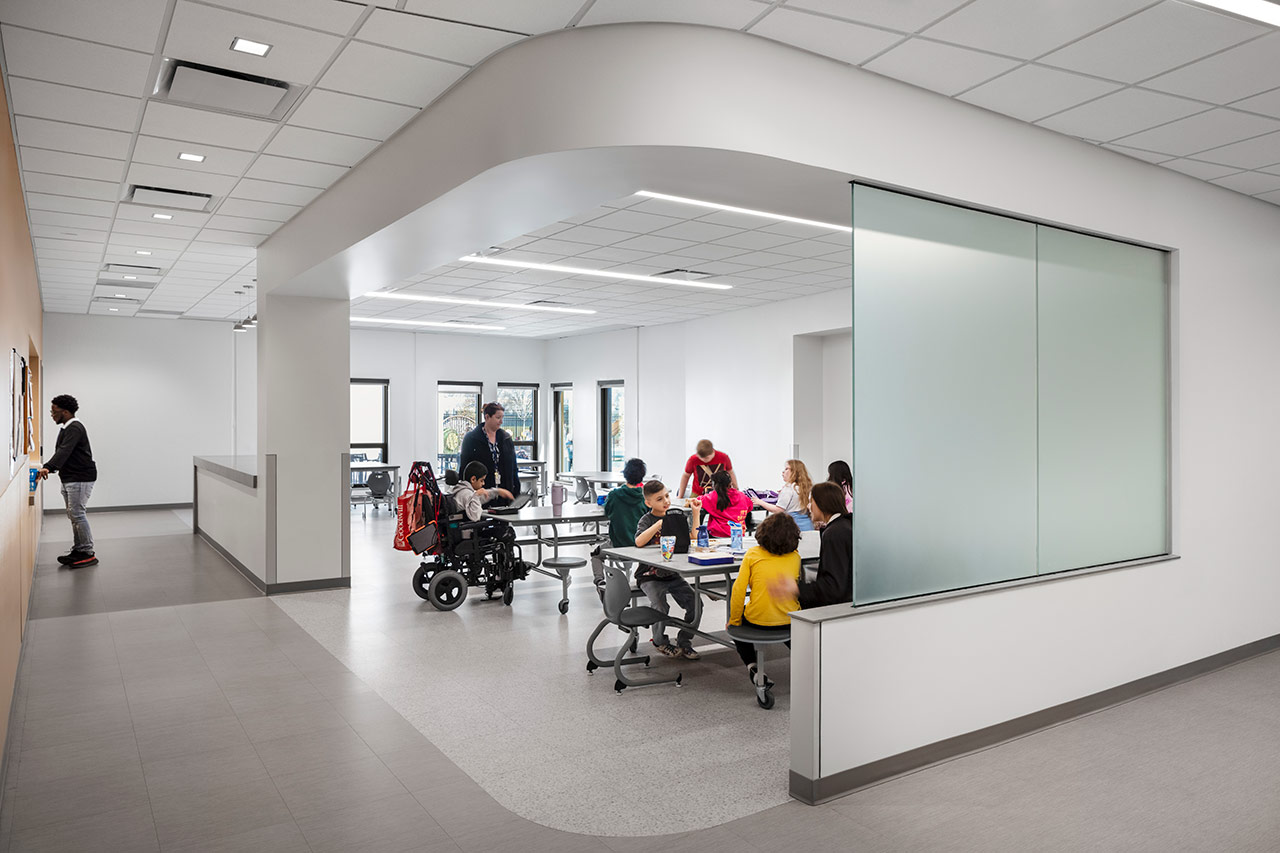
The emphasis on easing transitions extends to the cafeterias on both floors. Semitransparent windows screen distracting activities but still allow cafeteria occupants (maximum of 40 in each) to see light and motion.
The team’s research also showed that vertical circulation can be stressful to A.E.R.O. students. The main staircase design overcomes the challenge — perforated metal panels ensure the space is neither too closed off nor too open. Children cannot stick their arms through the panels, but they can safely look down, and adults have visual control of the space.
Designers focused on minimizing distractions throughout the facility. For instance, classroom cabinets, walls, and doors hide backpacks and other distractions. Spartan second floor corridors reduce visual clutter even more than their first-floor counterparts.
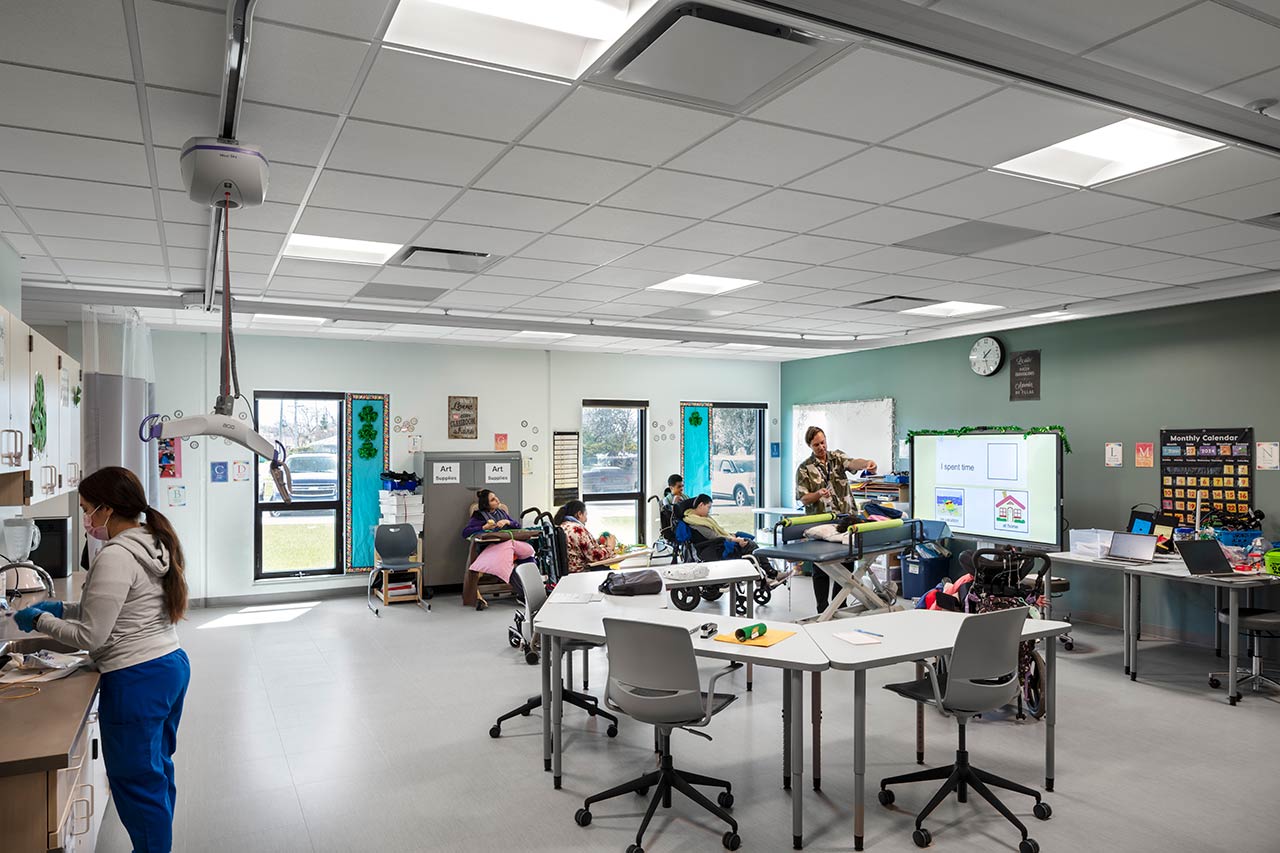
A New Standard for Special Education Classrooms
A.E.R.O. Therapeutic Center houses three classroom types. First floor multineeds classrooms cater to students with the most profound cognitive impairments. Each of the six multineeds classrooms serves four to five students between the ages of three and 22. It has its own bathroom and access to the bathroom in the adjacent classroom as well as a shared changing room and two areas for students who need private time: a quiet zone behind a wall and a breakout area between each pair of classrooms. The latter doubles as teacher collaboration space. Breakout room doors have windows so students within still feel connected to their classmates. Students who need more attention can be escorted to the corridor light room.
Typically, harness systems that carry disabled students are confined to one part of a special needs classroom. The patient lift system in A.E.R.O.’s multineeds classrooms, however, allows the harness to move throughout the spaces to benefit students and staff.
All other first floor classrooms have their own bathroom, and each of the facility’s 55 classrooms has a quiet area.
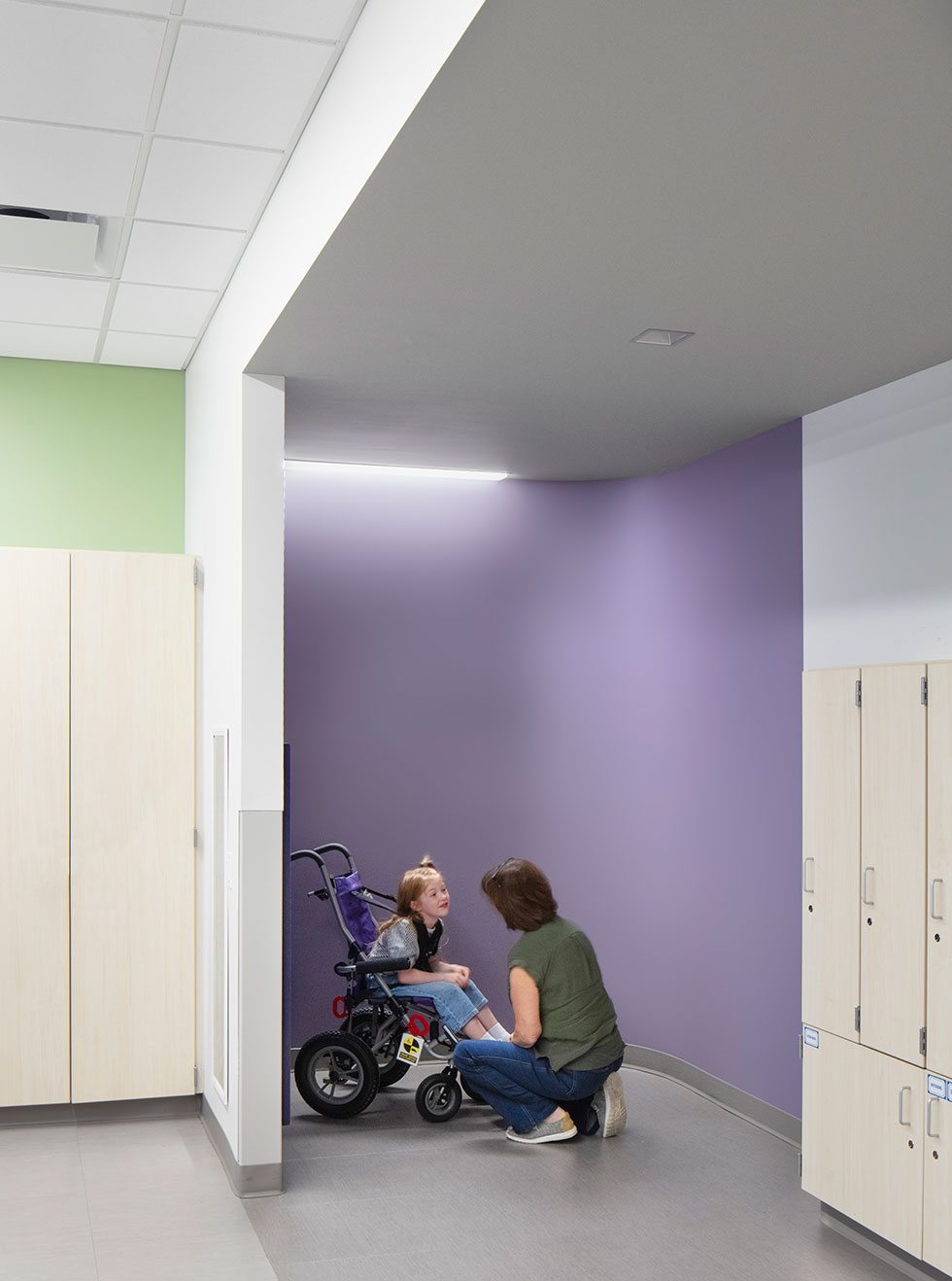
Second floor classrooms, lockers, and public restrooms are closer to what one would find in a traditional high school.
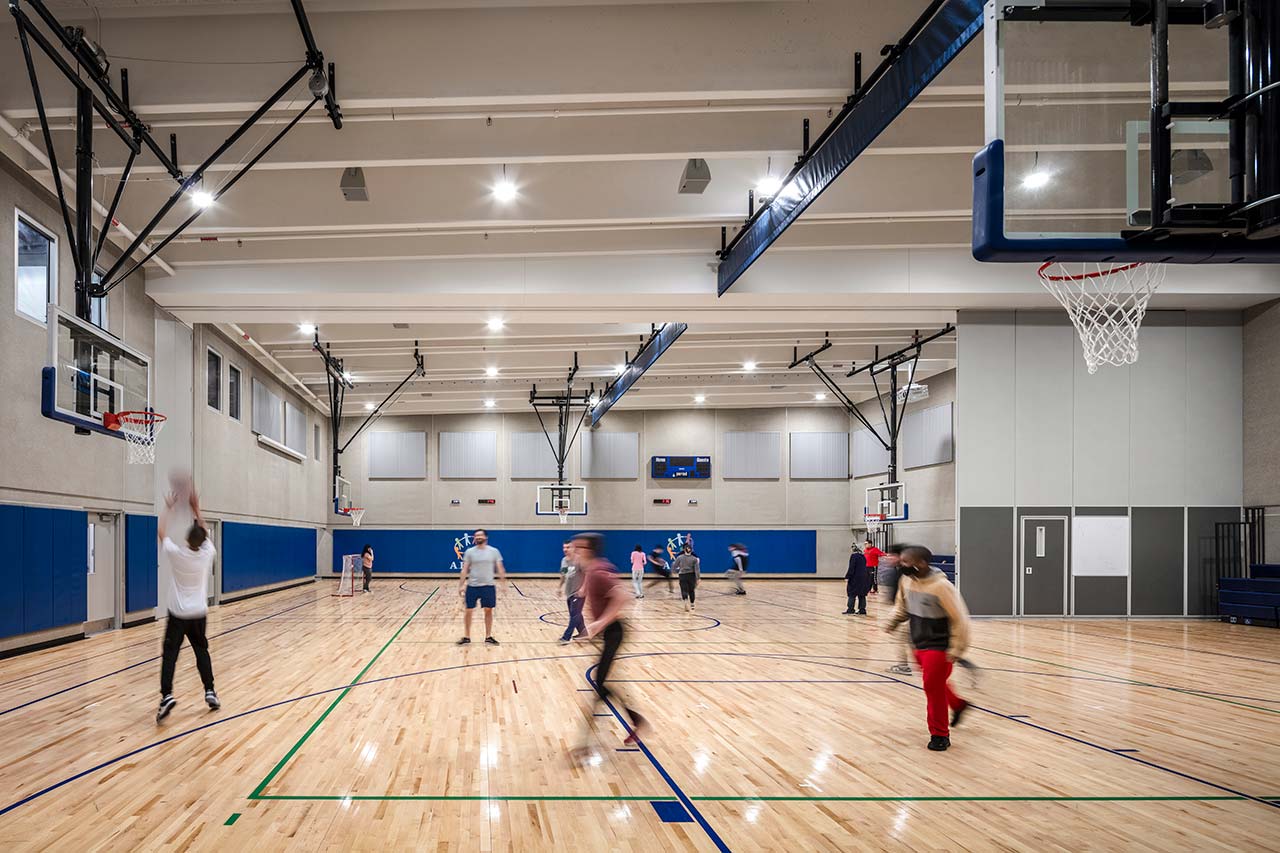
Gymnasium Emphasizes Access, Acoustics, and Safety
Before the new school was built, A.E.R.O. Special Education Cooperative had to rent a space large enough for staff training. The new gym, triple the size of its predecessor, eliminates that problem and therefore saves the organization money.
The main design challenge with the gym, however, related to students: the space needed to give all students access while preventing mixing of the different populations.
The solution comes in a movable acoustical wall that divides the gym in half. Curtains within the halves further divide the gym into quadrants, each of which is accessible by a separate stair. A.E.R.O. staff can move student groups in and out of a quadrant without interacting with others.
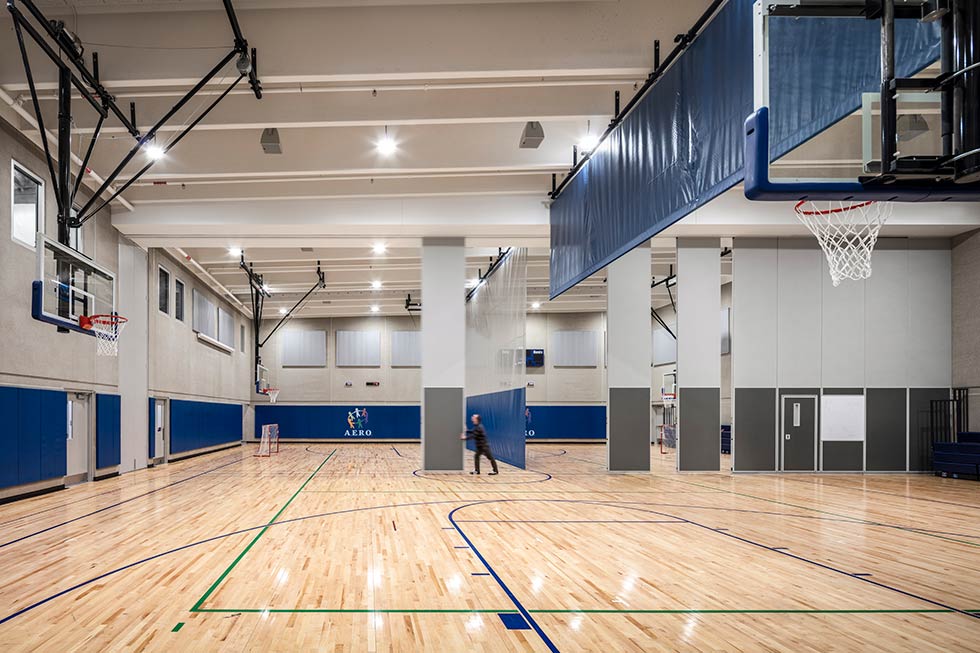
Acoustics were another important factor. “We knew this would be a loud room with lots of reverberations, so we added plenty of acoustic treatments to help dampen the sound,” said Wroble.
Acoustic highlights include an all-concrete roof, concrete block walls, acoustic material on the movable walls, and wall-mounted acoustic panels. Additionally, unlike the white-painted concrete block often seen in school gyms, the A.E.R.O. gym has the same light-colored concrete panels as the facility’s exterior to create a warmer feel.
The gym also doubles as a tornado shelter — it closes off from the rest of the facility, and each quadrant offers phones. Restrooms are within the shelter. The second-floor exercise room, which is part of the shelter, would protect students who were unable to get to the first floor in time.
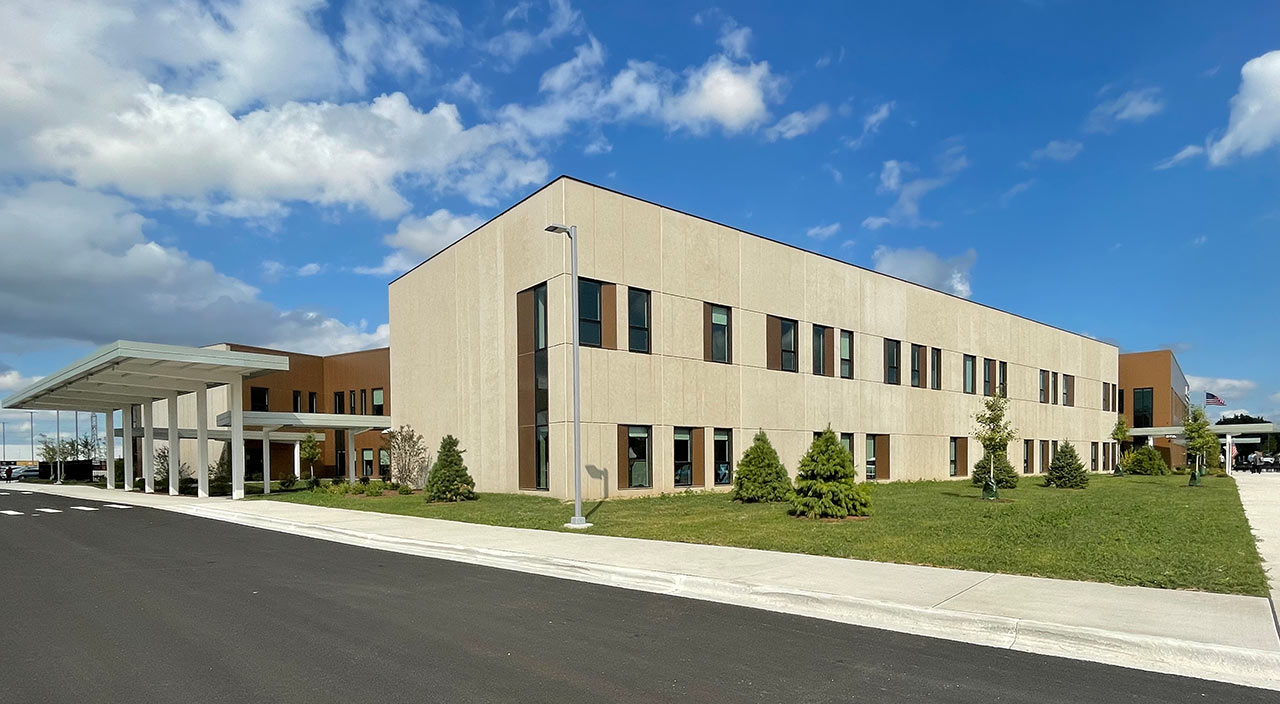
The Functional and Aesthetic Benefits of Precast Concrete
The new A.E.R.O. campus’s location just two miles south of Chicago Midway Airport and nine miles west of a major railyard posed another design hurdle.
“All day long, you can hear the rumble of aircraft and the screech of brakes at the A.E.R.O. site,” said Wroble. “We had to find a way to dampen those sounds, especially for a population that is particularly sensitive to sound and vibrations.”
The answer came in the tilt-up precast concrete panels that form the school’s exterior. The inherent mass of concrete absorbs noise and vibrations.
The panels reduced construction costs and time. The 12-foot by 30-foot panels were constructed off site, delivered to the campus, and then “tilted up” into place.
The precast also helped the team overcome an aesthetic challenge. “We didn’t want it to look like a warehouse, so the manufacturer pigmented the precast with a special aggregate to give it texture and create a warmer look,” said Wroble.
Irregular window patterns and distinctive framing distinguish the precast. Bands of copper-colored metal border the windows, and the metal frames and slanted indentations around the windows cause the façade to change in appearance as the sun’s position shifts.
Wroble and team also specified cost-effective metal panels with a copper hue to identify entrances and give the facility some “architectural punch.”
COVID-19: Something Good from Something Bad
Design of A.E.R.O. Therapeutic Center started two months before the COVID-19 shutdown. Eventually, two major retailers started snatching up all the metal to build the structural systems for their massive warehouses. That not only skyrocketed the cost of steel but also caused severe delivery delays of up to 10 months.
The A.E.R.O. design team pivoted — it redesigned the facility’s structural system using concrete instead of steel. This shift not only allowed the facility to meet the original schedule and budget, but it also decreased noise transmission between floors.
“Typically, with a steel structural system, there’s five inches of concrete underneath a floor,” said Wroble while conducting a tour on the second floor. “With this, we have 14 inches of concrete beneath us, so the people below don’t hear stomping or other noise.”
To reduce sound transfer, the design locates all rooftop HVAC units above restrooms. Thus, noise and vibrations from the units affect restrooms and not classrooms.
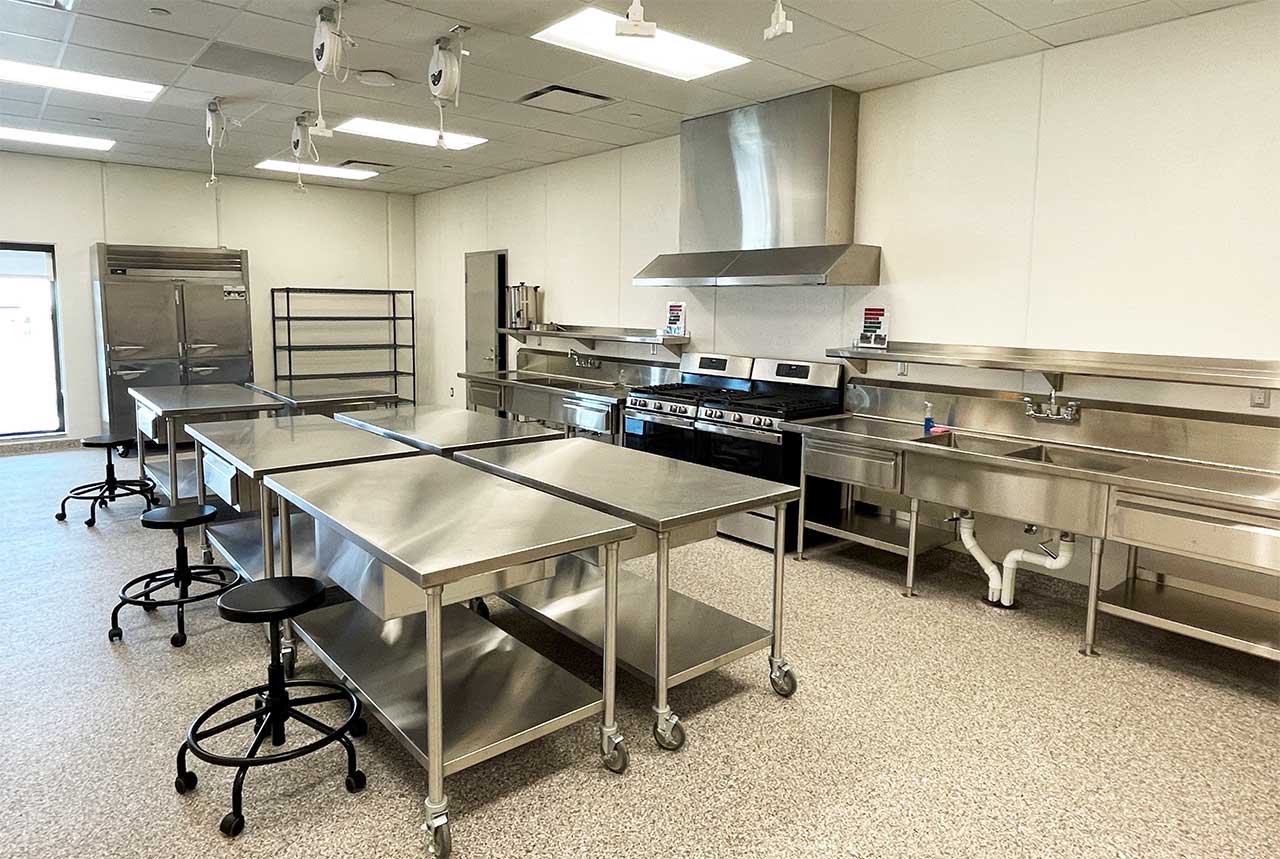
Independence and Employment
Because A.E.R.O. manages students through age 22, the organization also teaches daily living and job skills.
Stand in the Home Life Skills room on the center’s first floor and you would never know that you are in a school. The simulated apartment includes a living room, dinette, kitchen, laundry nook, bedroom, and washer/dryer nook.
In the second-floor Commercial Life Skills training room, students learn everything from folding silverware and dishwashing to food preparation. It offers ovens, countertops, work surfaces, and a commercial washing machine. Additionally, a dedicated laundry room on the first floor has a commercial-grade washer and dryer for multiple daily loads and skills training.
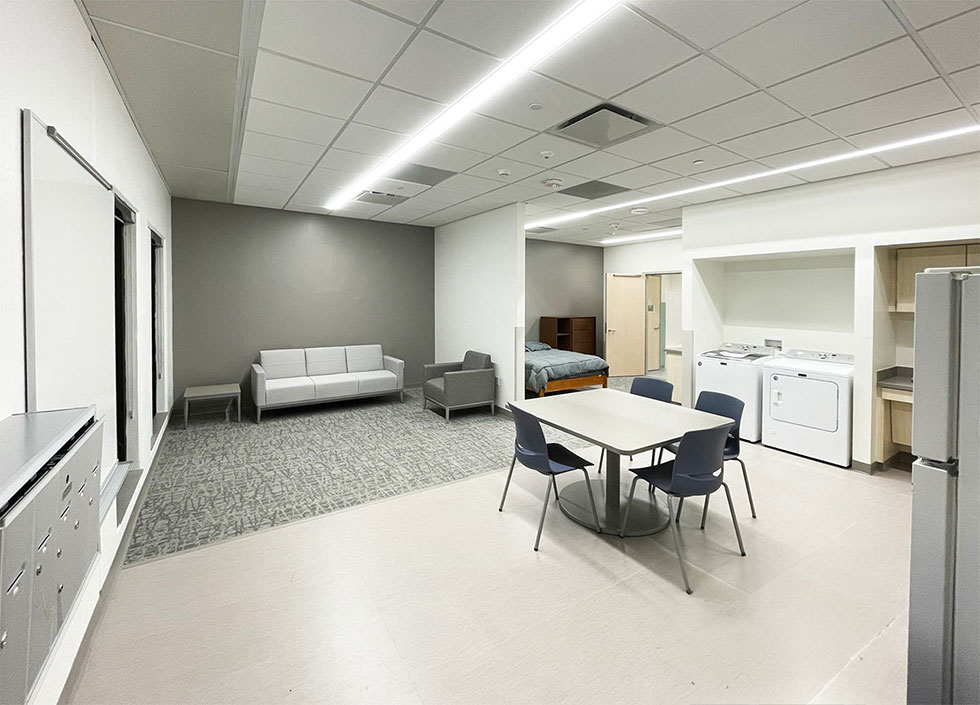
The second floor also houses foyers/waiting rooms and staff offices for A.E.R.O.’s Connect program, which helps students who have completed the high school program to transition into the community and find employment.
Other real-world training opportunities exist throughout the facility. Both cafeterias, for example, have a countertop that supports point-of-sale training. Moreover, the design team used the wings’ rotated geometry to create corridor niches identified by floor patterns and lower ceilings.
“The niches support job skills and socialization,” said Wroble. “We envisioned little stands where students could sell things like flowers or coffee to teachers.”
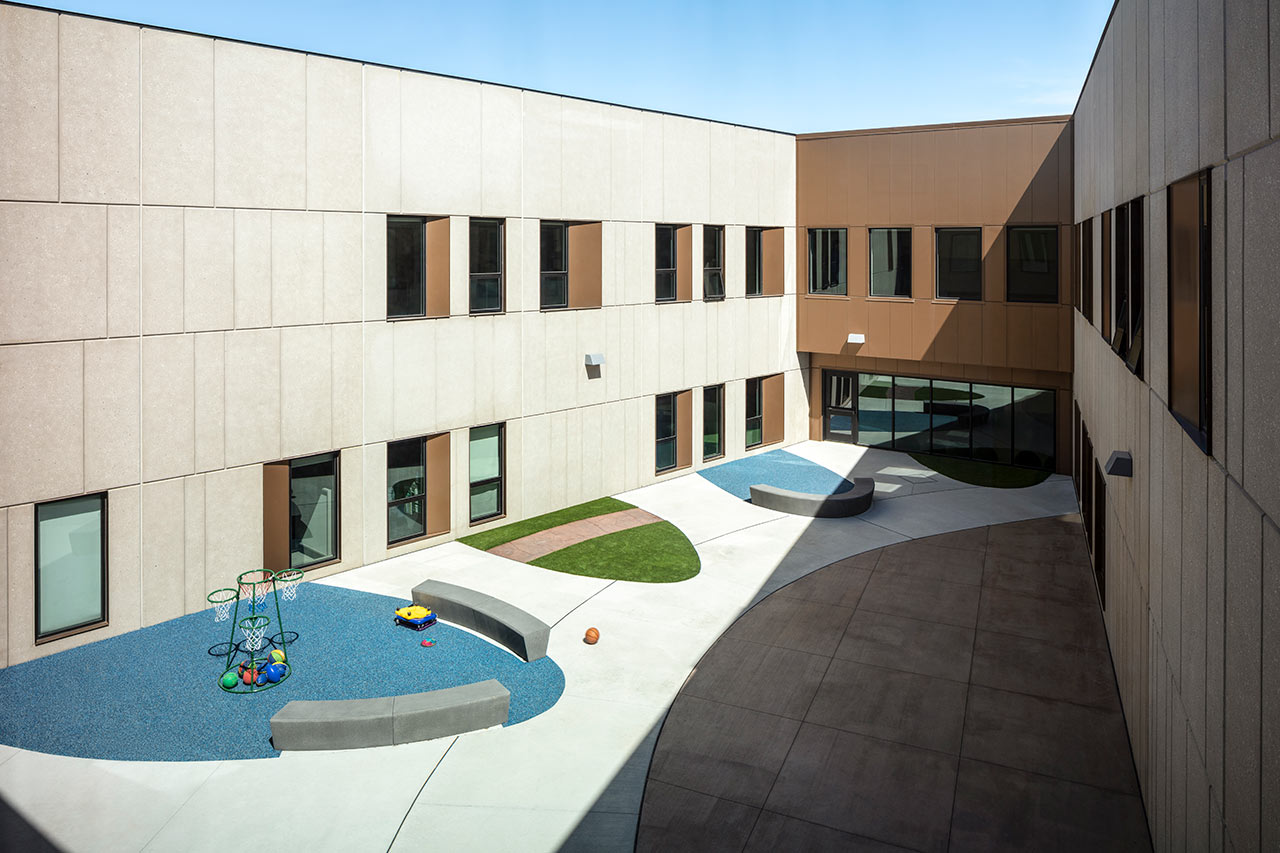
Exploration and Interaction: Outdoor Spaces
Research and faculty input revealed the pivotal role of outdoor spaces for promoting sensory exploration, physical exercise, and social interaction among A.E.R.O.’s students.
A.E.R.O. Therapeutic Center embraces two outdoor courtyards. The activity-based courtyard features a circular path with different surfaces such as artificial turf and soft rubber. Whether walking or operating a trike, scooter, or wheelchair, students experience changing textures as they traverse the path. Colored concrete creates different zones within both courtyards, and each courtyard is large enough to hold tables and seats for meetings or gatherings.
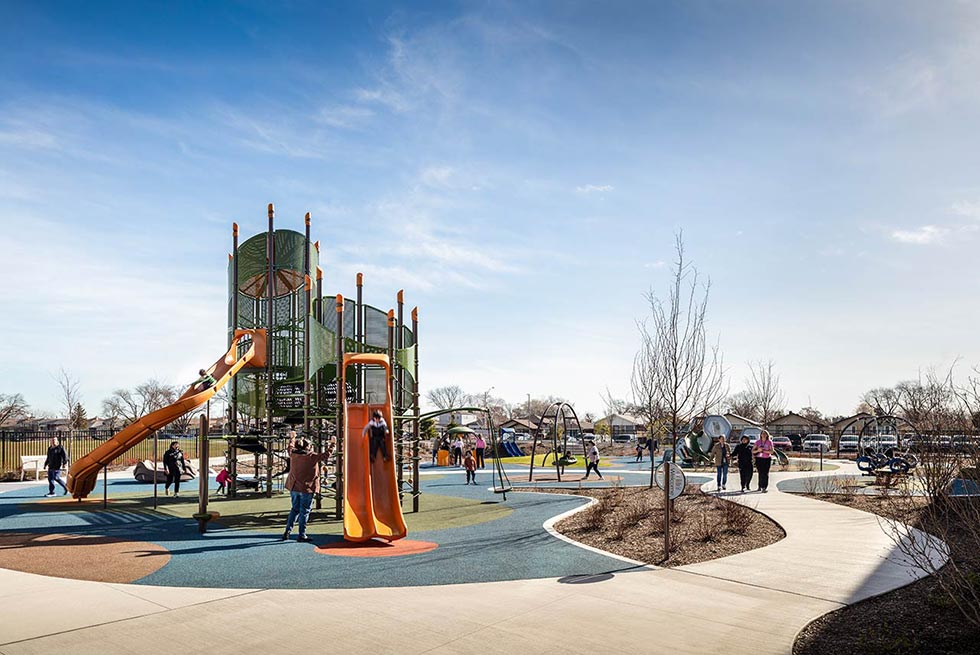
Two large playgrounds at the back of the campus welcome students. Walking paths meander through the island-themed playground where younger students have access to specialized equipment such as a wheelchair-accessible merry-go-round and a teeter-totter for students with disabilities. A music corner offers chimes, bongos, and other instruments, and a texture wall welcomes touch.
The adjacent playground is designed for older students. It has a basketball half court, a grassy area, and benches as well as a grandstand area that supports outdoor instruction.
Drawing from Home and Nature to Reduce Stress
Knowing that the special education enrollment process can be stressful for both parents and students, the design team focused on the diagnostics room, where staff evaluate potential students.
The room’s location around the corner from the entry avoids stressful encounters as parents and prospective students are exposed to the facility. Unlike the typical conference room, the A.E.R.O. diagnostics room resembles a living room with a kitchen. Adults sit at the “kitchen table” and observe how children behave and interact in a non-threatening environment. Two-way glass separates the diagnostics room and an observation room.
To further reduce stress, the design draws from the concept of biophilia, or the innate human desire to connect with nature.
“The goal was to make the occupants feel surrounded by nature without making it overstimulating,” said Wroble.
Biophilic examples range from the clerestory windows that draw natural light into the offices to the light birch doors and the tactile wall panels at classroom entrances. Even the flooring in some areas has a grassy, natural texture.
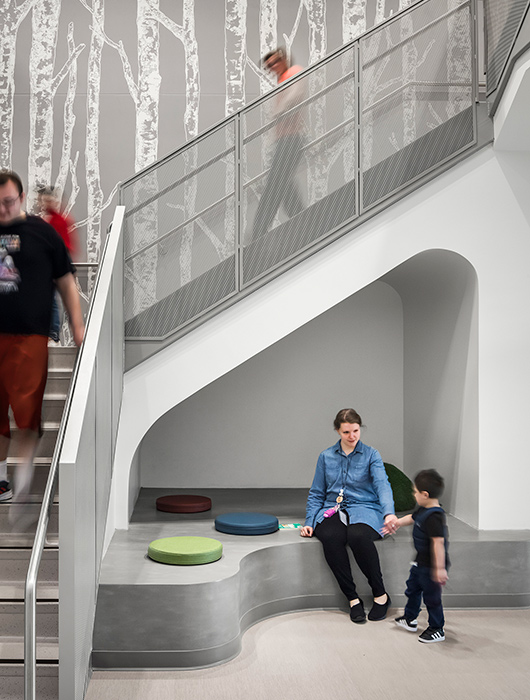
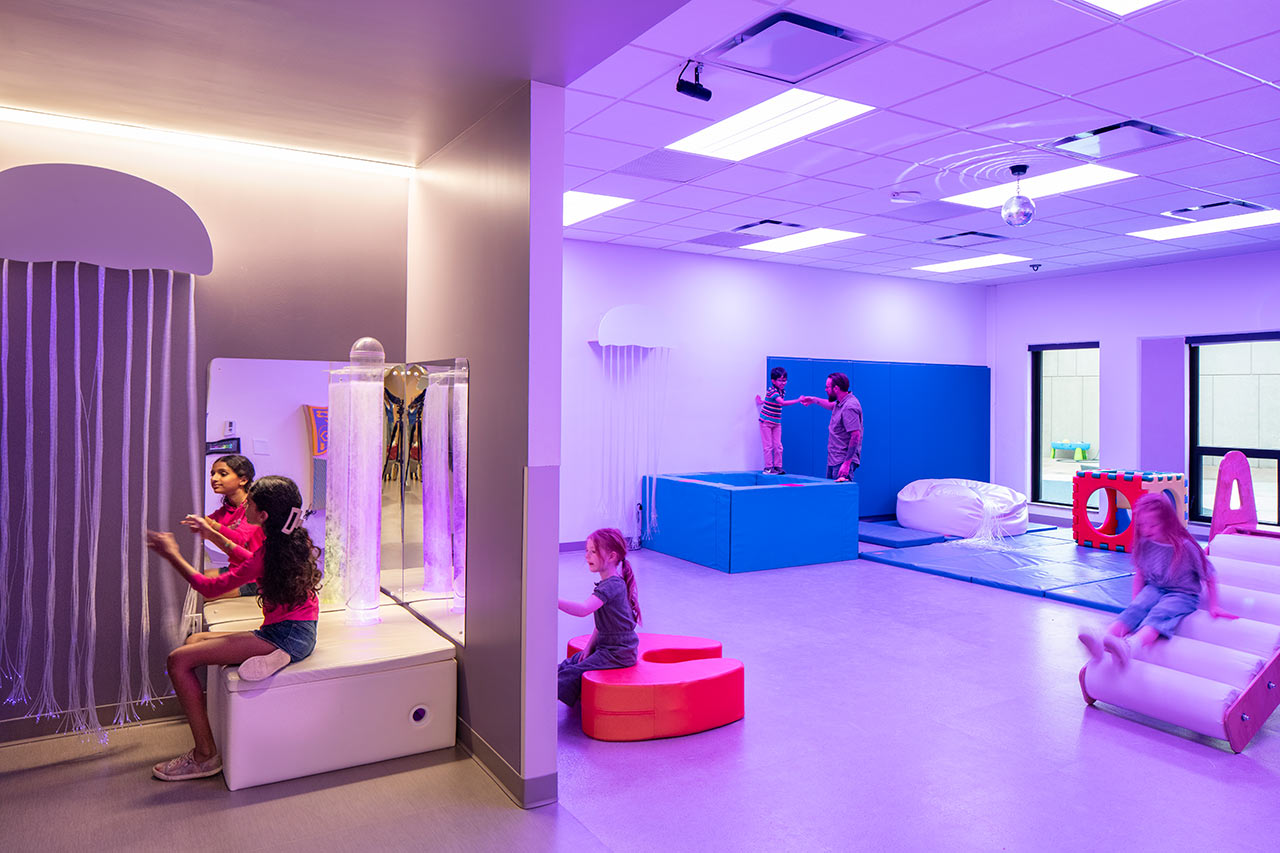
A Beacon of Hope
From muted corridors and small, calming cafeterias to accessible playgrounds and flexible classrooms, every aspect of A.E.R.O. is crafted to offer a nurturing and hopeful environment. The design, addressing the unique challenges faced by A.E.R.O. students, emphasizes ease of navigation, minimized stress during transitions, and the integration of natural elements to create a soothing atmosphere.
A.E.R.O.’s journey from a fragmented, cramped operation to a unified facility reinforces its commitment to creating a safe and inclusive space. The result is more than a school; it’s a beacon of hope and a model for the future of special education. A.E.R.O. Therapeutic Center demonstrates that research-driven design can profoundly impact the lives of students and their families.
Contact us with your educational facility design challenges.


